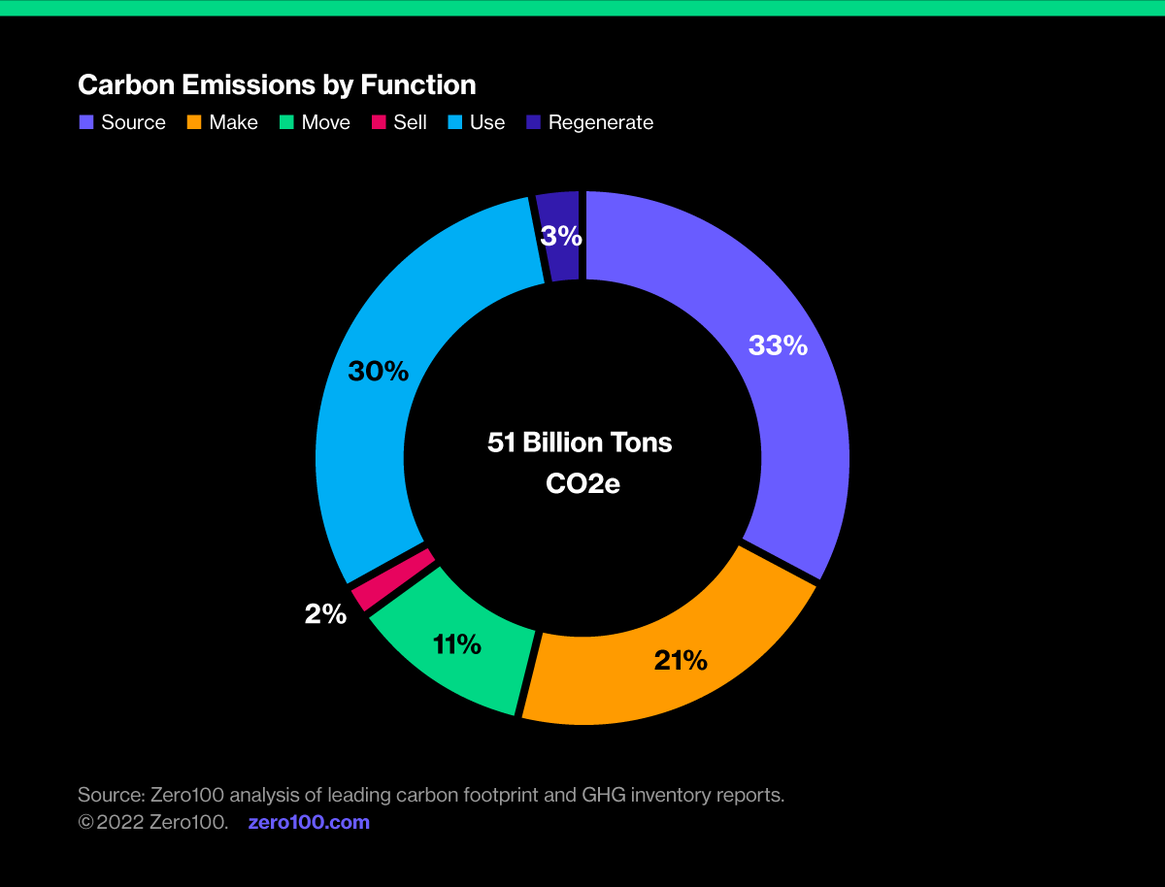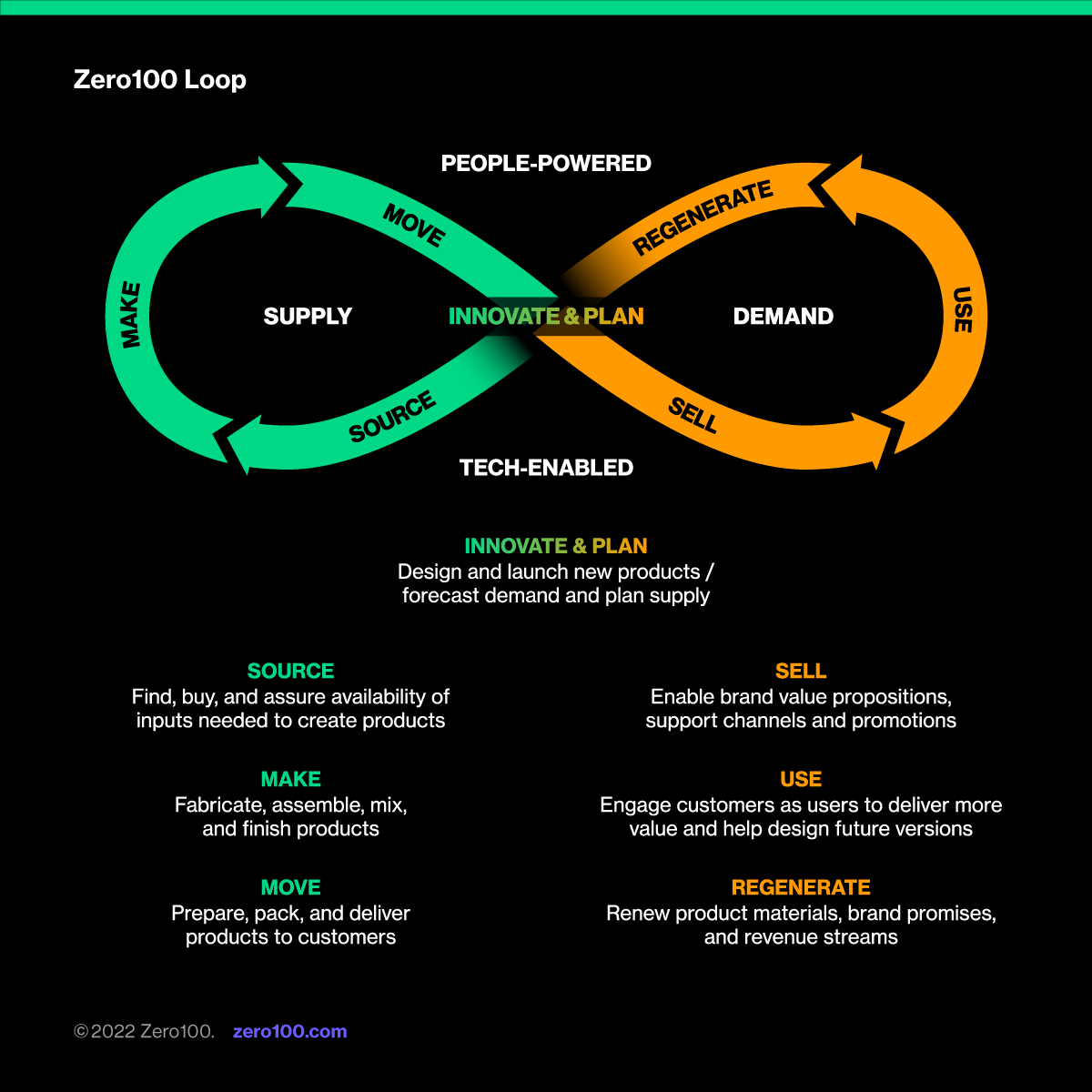
Five Big Steps to Cool the Planet
In early July, we experienced the world’s hottest day. For those who want to help, here are five consumer moves everyone can make to send the right message to businesses as they source, make, move, and sell the products we use.
Early July saw new all-time high global temperatures. People care, but the challenge is simply knowing what to stop and what to start for anyone who wants to help. In that spirit, here are five steps we can collectively take as consumers to make a difference.
Where Is the Carbon Coming From?
Last year, Zero100 published a research report which estimated how much of the total 51.4 billion tons of annual greenhouse gas (GHG) emissions could be traced to each of the six functions along our Loop model of digital and sustainable supply chains. We did this by breaking down emissions estimates from Climate Watch, Breakthrough Energy, Circle Economy, and the IPCC and then reclassifying their data according to the way supply chain people think about work.

The big takeaway is that no one can do it alone since 63% of the total comes from upstream supplier decisions and downstream end user behavior combined. This means that, in the absence of comprehensive regulatory pressure, we all share the need to get smarter as consumers to drive business in the right direction.
Five Big Things, By Function, That Will Send the Right Message
Source – Two categories of raw material contribute 64% of the 16.6 billion tons of sourcing-driven carbon: animal products and metals. Consumers are only distantly aware of these inputs and often worry too much about plastic packaging and not enough about the product itself. The big impact moves are to look for plant-based protein sources like lentils, tofu, and beans in place of meat, and adopt a fix-it-first attitude to big metal things like appliances, barbecue grills and cars. The meat-to-veg pivot is good for your health and shifting from replace to repair will save you money and hassle lugging big junk out to the curb for special trash pickup.
Make – 8.3 of the 10.9 billion tons of manufacturing emissions come from energy to run plants. For big brands consumers recognize, only a small portion of this is from owned operations. Most is from supplier factories upstream which are often run using coal or oil-fired power. The big consumer move is to know which companies are driving renewables back upstream with the help of purchase power agreements (like Walmart), or energy conversion assistance (like Schneider Electric) and reward them on social media. It’s an oversimplification to think big is bad. The fact is that bad is bad, and we should get better at thanking those who are good.
Move – Logistics is a smaller contributor to GHG emissions than most people think, worth only about 11% of total. The biggest single culprit however is clearly road transport which produces almost twice as much as air and ocean combined. Consumers can help here by dialing back expectations of next-day delivery so supply chain planners can more easily optimize load building and route planning for last mile and long-haul shipping. For in-store shopping it will also help if consumers don’t punish retailers too aggressively for out-of-stocks. Your customer loyalty sustains their ability to reduce emissions.

Sell – Direct GHG emissions from retail are nearly irrelevant despite what may seem like lots of visible energy use. Brick and mortar retail will never disappear, so the key move here is to help retailers use their stores as an efficient extension of their supply chain network. IKEA pioneered this concept, but most big grocers are actively experimenting and need consumer engagement to refine the model.
Use – Second biggest of all Scope 3 GHG contributors is use of products after purchase. Nearly half of this is electricity in the home and about a third comes from gasoline and diesel vehicles. The big move is renewable energy and electrification. Battery technology may be the most critical piece of the puzzle so thinking ahead about your energy strategy for housing and transport could help direct demand and investment toward the mega-shift of energy infrastructure required.
What About Regenerate?
The breakthrough opportunity is to tie end-of-life back to source through a step Zero100 calls “Regenerate”. Helping this happen is just a matter of constantly asking how the business you’re buying from renews its materials, its brand promise, and its business model.
Remember, we’re all in this together.